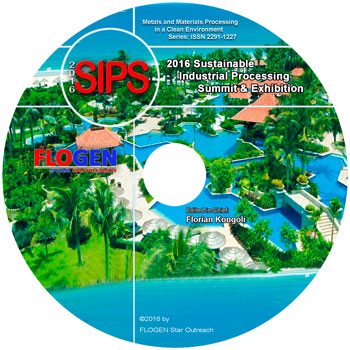2016-Sustainable Industrial Processing Summit
SIPS 2016 Volume: Summit Plenary
| Editors: | F. Kongoli |
| Publisher: | Flogen Star OUTREACH |
| Publication date: | 21 December 2016 |
| Pages: | 103 pages |
| ISBN: | 978-1-987820-58-4 |
| ISSN: | 2291-1227 (Metals and Materials Processing in a Clean Environment Series) |

CD shopping page
ROLE OF SCIENCE AND TECHNOLOGY ON SUSTAINABLE DEVELOPMENT
Florian Kongoli1;1FLOGEN TECHNOLOGIES INC., Mont-Royal, Canada;
Type of Paper: General Plenary
Id Paper: 524
Topic: 42
Abstract:
Sustainable development should be a prerequisite criteria in evaluating the objectives and outcomes for any project in any field of life. However confusion exists on the definition of sustainability in the literature and in the society at large and various criteria, actors, goals and other items have been unsystematically mixed in a pot without a clear distinction. Furthermore the majority of products used so frequently in all aspects of modern life today are products of science, technology and engineering. Most of them originate from metals and materials extraction and processing industries. Despite this, confusion again exists in the perception of the society about the general role of science, technology and engineering on sustainable development. Science and technology is sometimes not even considered as a solution provider for sustainable development.
This plenary paper clarifies this confusion by making a clear distinction between criteria, actors and goals of sustainable development and provides a new sustainability framework through a new graphical representation. This new framework is used to present and interpret the author’s own modified central paradigm of materials science and engineering along with its recyclability/reutilization dimension. Recycling versus waste, linearity versus circularity and automation versus manual work are analyzed in terms of their advantages and disadvantages in the light of the new framework concluding that recycling, circularity and automation are genuine sustainable activities.
The role of science/technology, governance & management and education & civil society are analyzed as three composite actors or pillars of sustainability. It is concluded that the winning formula is a close and strong cooperation between them in equal levels and as equal partners if science and technology is kept first in the order of actions. This is because science and technology has the first word in diagnosis and the last word as in solving issues related to long-term sustainable development.